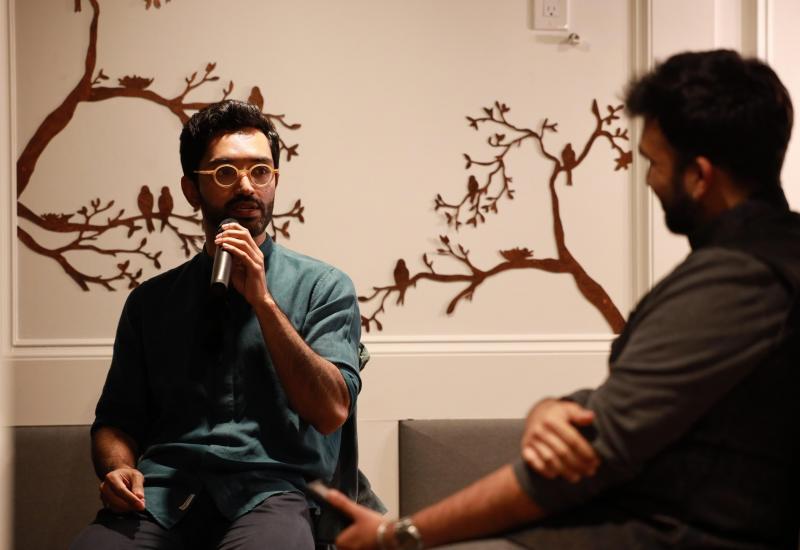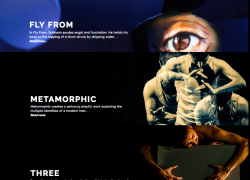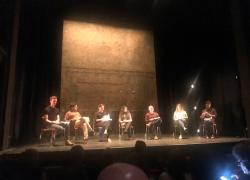#MeToo, one story, many stories
Pulse has deleted all references to the identity of the abuser and victim in the article. It is an important cautionary case to share for the benefit of the dance community to raise awareness amongst dance students and their families and also for those organisations and institutions teaching dance.
As daunting and challenging as it has been to imbibe a life-time of training in a classical art and to perform for thousands of audiences, writing this article has by far been the scariest and thus bravest thing I’ve ever done in my life as a performance artist. These words, like good art, contain the truth, the whole truth, and nothing but the truth, so help us God. However, unlike art, these words do not require your judgement or interpretation and only deserve your belief, empathy, and maybe even action to prevent this reality from ever recurring to any other performing artist.
…Where do I begin? …by dispelling myths.
Fact: When we imagine sexual assault, often we get the image of a woman walking late in the night being attacked by a stranger in the darkness. Although stranger rape does happen, statistics actually show that 82-90% of all sexual assaults are committed by people we know and even trust. Sexual violence usually happens within a complicated context of power dynamics, grooming, gaslighting, honour, shame, and a culture of silence that would rather ignore and deny its existence, than believe its victims and turn against perpetrators who often hold much power and influence.
Fact: Only 1% of perpetrators ever spend a single day in jail. Victim-blaming/shaming attitudes from police, society, and sometimes even family prevent survivors from ever reporting to the police and then cases that are reported are often closed, despite the fact that only 2% of all sexual assault reports are ever proven to be false. Nevertheless, this is changing with the growing #metoo movement
I remember how overwhelmingly happy I was when he complimented my dance to my mother and, then, teacher when I was only a teenager. I remember after one of my performances, he encouraged me to learn from him. I thought to myself that after all those years of effort and dedication that my family and I had invested, finally it all had paid off.
Fact: Grooming is a predatory act of manoeuvring another individual into a position that makes them more isolated, dependent, likely to trust, and more vulnerable to abusive behaviour. Grooming blurs the lines around abuse – makes it more difficult to identify when it is happening, and more difficult for the victim to identify and talk about in retrospect. Many aspects of “grooming” (a common tactic used by sexual predators) and professional development or apprenticeship “grooming” have many parallels. However in the prior, the elements of trust and respect are instead turned on their head to cover sexual abuse and protect the predator. The seven stages of grooming are:
1) identifying the victim
2) gaining trust of and access to the victim
3) becoming important and close to the victim
4) isolating the student or victim
5) secrecy about the relationship (abuse)
6) sexualizing the relationship
7) controlling the relationship
It is then when I had been been left alone with him, that he first tried to put his arms around me. I remember my body froze from fear and then immediately I pulled away and tried to explain to him that I could not do what he asked of me...
Fact: Tonic immobility is a neurobiological response of involuntary paralysis in which individuals cannot move or, in many cases, even speak. In animals, this reaction is considered an evolutionary adaptive defense to an attack by a predator when other forms of defence are not possible. Much less is known about this phenomenon in humans, although it has been observed in soldiers in battle, as well as in survivors of sexual assault. Studies have also shown that the physical and psychological effect of sexual assault on victims is similar to the victims of an attempted murder. This reveals the high level of trauma and crisis that the brain experiences when facing sexual violence.
… I remember after refusing his advances that one time and every subsequent time after that, he would purposefully humiliate or socially shun me during our group classes
Fact: The definition of rape culture is a complex set of beliefs that encourage male sexual aggression and support violence against women. It’s a culture in which constant harassment and assault against women is the norm and sexual violence is a fact of life, inevitable as death or taxes. This violence, however, is neither biologically nor divinely ordained. Cultural dynamics have a significant impact on how society talks (or doesn’t talk at all) about sexual violence, often reinforcing patriarchal norms and values, especially those concerned with honour and shame.
…I remember finally giving up. After all, dance was all I had known and the very basis of my self-identity at the time. If I could speak to myself then I would have told my younger and, yes, more innocent self no tradition and no teacher is worth more than the universe that is every human being,
Fact: The ‘Stockholm Syndrome’ was originally developed to explain the phenomenon of hostages bonding with their captors. The name refers to a bank holdup in Stockholm, Sweden in 1973 when four people were held hostage for six days by two men. The hostages and their captors bonded with each other and the hostages actually came to see their captors as protecting them from the police. Subsequent research found that such a reaction had occurred in all the ‘hostage’ groups studied, including sexual assault victims. Researchers have concluded that this seems to be a universal phenomenon which may be instinctive and thus play a survival function for victims of abuse. The victim’s need to survive psychologically is stronger than their impulse to hate the person who has created the dilemma. This positive emotional bond with the abuser acts as a defence coping mechanism for the abused.
After a while, I couldn’t play along anymore, though, when he retaliated, it was with a vengeance which almost destroyed me. He completely shunned me socially and tried to convince everyone in that world that I had lost my mind.
Fact: Gaslighting is a form of psychological manipulation that seeks to sow seeds of doubt in a targeted individual or in members of a targeted group, making them question their own memory, perception, and sanity. Using persistent denial, misdirection, contradiction, and lying, it attempts to destabilize the victim and delegitimise the victim's belief.
I have survived this and I know that one day my spirit and dance will fly free again but this time I will dance stories not based on myths and silence but on the truths that break civilization’s most ancient evil hypocrisies.
If you have an experience you want to relate you can write in confidence to the Editor sanjeevini@pulseconnects.com.
We are working with all the Sadaa organisations to find a way forward to keep all our dance students and dance community safe.
Links for support:

















